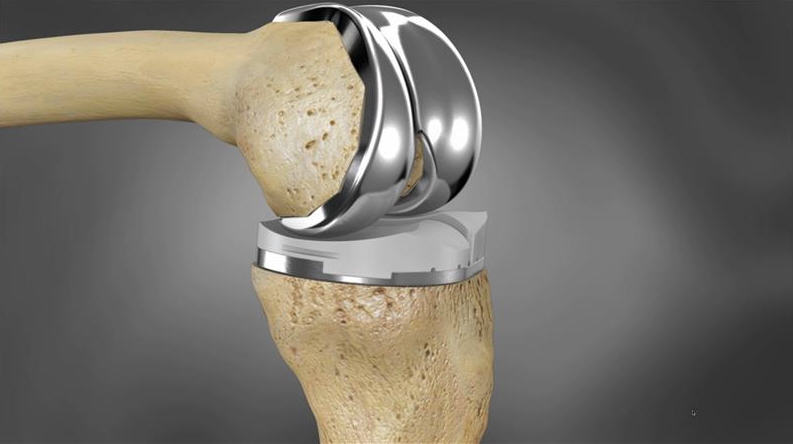Materials have to be resistant to wear, they need improved mechanical properties and they need to be compatible with the human body while abiding with public health requirements. Knees are a good place to make advances since knee problems are common and real-world data has been available for decades.

Credit: Research Center for Advanced Materials (Cimav)
"The biocompatibility is the ability of a material to be in contact with a living being without adverse effects, therefore represents one of the most important properties in the manufacture of a biomedical implant. Currently the knee and hip implants are complex systems made of titanium alloy substrates, which require a coating compatible with bone tissue and physiological fluids using nanotechnology; to achieve this intermediate coating deposition techniques of new synthesized materials are used.
"We use a ceramic material which is compatible with the bone, in this case hydroxyapatite, which is used as a matrix and nanoparticles from other materials are used to reinforce it and provide improvements to the bicompatibility, joint wear and mechanical properties," explains Arizmendi Morquecho.
Due to the complexity of the system for the knee implant, scientific work is completed in parts: research is focused on the coating that will join the the metal substrate (titanium alloy) to the bone, the study of polymeric biomaterials which will be in contact with the articulation and both focused with the entire system compatibility with body fluids.

Credit: Research Center for Advanced Materials (Cimav)
“Each research is a graduate level thesis and participation of a multidisciplinary group of researchers that ultimately come together for the same product, a final component. The next stage of the project is to validate in vitro and in vivo synthesized material at a laboratory level, for which the link with other entities such as medical schools and academic institutions specialized in this type of testing is necessary. It’s important to note that compatibility tests are standardized under sanitary policies and those entities are responsible for validation in our developments."
Source: Investigación y Desarrollo




Comments